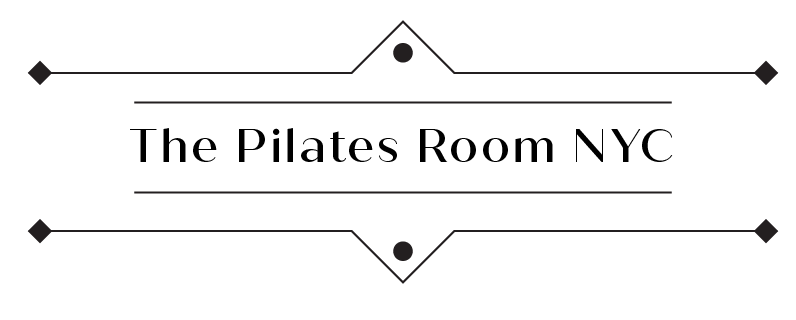The Surprising Connection Between Pilates and Better Sleep
Picture this: it’s 2am. You are furious and wide awake. You are taking a very severe tone with your inner self: You better get to sleep right now! You threaten yourself in the darkness, I swear to God if I see the light of dawn start to break through those windows… You turn over in bed and think about the long day ahead of you, and how you’ll need to fall asleep immediately if you’re going to get through it. But instead of calming you down, this thought only enrages you. Sleep seems like a distant planet.
In the throes of insomnia, it doesn’t feel as if there are any good solutions for sleep. But in thinking about low-impact ways to increase physical activity, reduce stress and promote better sleep, Pilates seems like a no-brainer.
Reduces Stress and Anxiety
Everyday stress is a common factor in insomnia. It’s easy to fixate on all the work ahead of you and to watch your proverbial to-do list unspool in your mind. One of the best ways to relieve general anxiety is by breathing. Not that shallow, panicky chest breathing, but the deep, deliberate diaphragm breathing that you engage in during a Pilates workout. This type of breath helps increase oxygen flow to the body and calms the nervous system. If you’re having difficulty sleeping, think about engaging in this type of deep breathwork from the comfort of your bed. This helps activate the parasympathetic nervous system (your body’s “rest and digest” system), which counteracts the stress response and promotes a sense of calm.
Back Pain? Not This Time!
As we age, back pain becomes more common. The wear and tear on our muscles and the compression and degeneration of our spinal discs can contribute to general back pain. Poor posture can also be a factor in upper back, shoulder and neck pain. Even relaxing all day on the couch can (counterintuitively!) cause back pain.
Back pain often feels worse at night, which can make it hard to find a comfortable sleeping position. Deliberate and prescribed movement can be a great place to start when looking for solutions to pain caused by stasis and poor posture. Pilates helps strengthen back, shoulder and core muscles, which in turn can help improve posture and reduce the strain on the back, which can alleviate chronic pain and discomfort that might otherwise disrupt sleep.
Promote Mindfulness and Body Awareness
During a Pilates workout, your mind-body connection is splendid. Do you ever wish you could bottle up this feeling and take it with you throughout your day and into the night? This heightened body awareness is a powerful tool for improving sleep. By learning to listen to your body during a Pilates session, you can become more attuned to any physical tension or discomfort that might interfere with your sleep. When we can’t sleep, the reaction is often one of rage and impatience, but instead, consider incorporating mindfulness—inspired by your Pilates practice—into your bedtime routine. Taking a few moments to focus on your breath, relax your muscles, and let go of any tension can help prepare your body for a peaceful night of sleep.
Boosts Energy Levels for Better Sleep Cycles
You know that sense of well-being that you have after working out? Endorphins are responsible for that moment where you feel the hope and possibility of the day merge with the surge of energy that makes you feel like you can achieve anything. Endorphins are the beautiful, natural chemicals released during exercise. These chemicals not only help reduce stress but also regulate your sleep-wake cycle, making it easier to fall asleep at night and wake up feeling energized in the morning. You don’t need to be running twenty miles a day or lifting heavy weights to kickstart these glorious mood enhancers. Full-body, low-impact exercises like Pilates can trigger endorphins.
Sleeping well at night gives your body a chance to repair and restore itself. People who engage in regular exercise tend to spend more time in the deeper stages of sleep, which are crucial for physical and mental restoration. By improving your energy levels during the day, Pilates can help ensure you’re tired enough to sleep soundly at night and provide the kind of sleep that allows your body to recover.
Try These Pilates Exercises
If you’re new to Pilates, start with short, gentle mat sessions—20 to 30 minutes—either in the morning to energize you for the day or in the evening to relax before bedtime. Choose exercises that focus on breath, relaxation, and gentle stretching rather than intense core work or cardio. Here are some popular Pilates exercises that promote relaxation:
The Spine Stretch: Focuses on lengthening the spine and relaxing the back muscles.
The Saw: Stretches the back and shoulders, helping to release tension.
Swan Dive Preparation: A gentle stretch for the spine and front body. It helps open the chest and shoulders while opening the lungs for deep breathing.
Child’s Pose: A restful, restorative counter-stretch that calms the nervous system.
Pelvic Curl: Releases tension in the lower back and encourages relaxation.
If you’re struggling to get the sleep you need, consider trying Pilates. You may find that this mindful practice becomes the missing link to a good night’s sleep.

